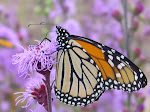 Photo credit: plants.usda.gov
Photo credit: plants.usda.gov
This plant is an example of how important native plants can be to restoring meaning to our landscapes. We utilize native plants such as this one along shorelines, rain gardens, moist swales and our yards. They adapt well to the local climate. They are native and co-evolved with birds, insects and humans.
This beautiful shrub is excellent for landscaping with. This dogwood is easy to grow and care for. It does not require fertilizers or excessive watering for it to thrive. It adapts well to a variety of soil types and tolerates wet to medium moisture. This dogwood is an important food source for migratory birds. The red stems and branches of this plant stand out in the winter and are often used for outdoor decorations.
Other Uses
What is not as well known is that the Dakota collect the inner bark of this plant during late February and early March. The Dakota do not smoke tobacco (Nicotiana spp.) in their sacred pipes. Instead they smoke the inner bark of this plant. The properties of this plant has healing qualities. Smoking of their sacred pipes often follows a ceremony & prayers.
Star Lore
In the night time sky, during late February and early March the Big Dipper scoops up a hot coal from the "sacred fire" constellation (parts of Leo & Gemini) and lights "the pipe" constellation (Triangulum & Aries). The Dakota believe the earth and the heavens are directly related.
Reference
Lakota Star Knowledge: Studies in Lakota Stellar Theology; compiled by Ronald Goodman of Sinte Gleshka University, Rosebud Reservation


No comments:
Post a Comment